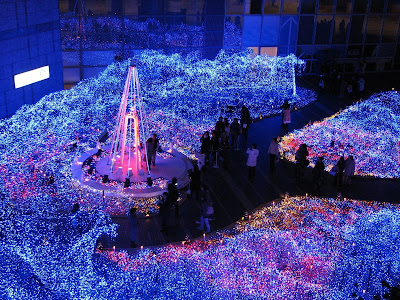by Lauren Stewart-Ebert
The SS Normandie
The SS Normandie was built in the early 1930's in Saint-Nazaire, France by the Compagnie Générale Transatlantique. She had a brief (yet fabulous) run...

In the early 1920's, the United States tightened its immigration policies and the huge steamships which had been mainly devoted to transporting steerage-class passengers had to be replaced by more luxurious liners which could entice middle-class travelers instead.
The British White Star Line and the German Norddeutscher Lloyd were leading this superliner race, Compagnie Générale Transatlantique was not going to be left out. The French line was approached by a former ship architect for the Imperial Russian Navy, Vladimir Yourkevitch. His designs for the new ship were radically different from the status quo, the new ship was to feature a sharply slanted bow (more akin to a clipper than an ocean liner) and a slim hull.

Side view and cutaway view of the SS Normandie
Soon after the stock market crash of 1929, construction began on the still unnamed ship. In the following years, Compagnie Générale Transatlantique had to ask the French government for loans to continue work (as did the White Star Line and Norddeutscher Lloyd of their respective governments).

On October 29, 1932 the newly named Normandie was launched to a crowd of 200,000. However, the ship was only in a completed state on the exterior. Over the next three years, her interiors were outfitted and, finally, in May of 1935, she was ready for a test run.

The launch of the SS Normandie
Yourkevitch's unique hull design was immediately noteworthy as barely a wave was created when the Normandie reached a top speed of nearly 60 miles per hour. In addition to the new hull shape, Normandie was filled with other new technical acheivements. She had turbo-electric engines, chosen for the their ability to allow full reverse power and an early form of radar (installed to identify other ships and icebergs).

The grand dining hall
The interiors of the Normandie were absolute marvels of
Art Deco style. Perhaps the most dazzling feature of the ship was the first class dining room. Over three hundred feet long, forty six feet wide and twenty eight feet high, this was the largest room in any ocean liner. This dining room could accomodate 700 diners at a time and served the most sophisticated French cuisine of the period. Because there was no natural light, the designers illuminated the room with twelve foot tall pillars of Lalique glass and thirty-eight matching columns along the walls. This, along with the many exquisite chandeliers hung throughout the ship, earned the Normandie the nickname "Ship of Light."

"The History of Navigation", by Jean Dupas from the Normandie's first class salon
A mural by Jean Dupas decorated the Normandie's first class salon and the children's dining room was decorated by Jean de Brunhoff (creator of Babar the Elephant). The Normandie featured indoor and outdoor swimming pools, dog kennels, a chapel and a theatre.

The theatre of the SS Normandie

The kennels of the SS Normandie

The grand salon of the SS Normandie
The maiden voyage of the Normandie took place on May 29, 1935 in Le Havre, France. 50,000 people watched as the boat steamed away. The Normandie reached New York City in only four days, three hours and fourteen minutes, setting a new record.
During her short but illustrious career, the Normandie carried a number of distinguished passengers including Ernest Hemingway, Noel Coward, Irving Berlin, Marlene Dietrich, Carey Grant, Walt Disney, Jimmy Stewart and the von Trapp family singers.

Cary Grant and Marlene Dietrich aboard the SS Normandie
At the outbreak of World War II the Normandie was docked at New York Harbor. After France fell to the Germans in 1940, the United States seized the Normandie. By 1941, the U.S. Navy began converting the Normandie into a troopship to be renamed the USS Lafayette.
On February 9, 1942, sparks from a welding torch ignited a stack of life vests and the fire rapidly spread. Although the ship had a state-of-the-art fire prevention system, it had been deactivated during the refitting and New York City fire department's hoses did not fit the ship's French inlets.

The SS Normandie ablaze

The SS Normandie ablaze
Firefighters on shore attempted to douse the blaze, however, as the ship filled with water it developed a severe list and at 2:45 a.m. on February 10, 1942, the USS Lafayette capsized.

The capsized SS Normandie in the winter of 1942
Due to the exorbitant costs, the ship was not restored. In 1946, the Normandie was sold as scrap for a mere $161,680.
Many rescued items from the Normandie are still regarded as masterpieces of the
Art Deco period and have been sold at auction since her demise, including the massive Lalique lights which adorned the dining hall, pieces of furniture by Jules Leleu and Andre Arbus and much of the crystal and silverware made especially for the ship.

A rosewood and velvet chaise lounge by Jules Leleu, commissioned for the SS Normandie circa 1935

A pair of mahogany armchairs by Pierre Patout, commissioned for the SS Normandie circa 1934
Although the Normandie is no more, her presence is still felt. She influenced the designs of the Queen Mary 2 and Disney's matching cruise ships the Disney Magic and the Disney Wonder. The Normandie Hotel in San Juan, Puerto Rico was built as an homage the ship and the Miottel Museum located in Berkley, California has a large collection of Normandie memorabilia.





 At the White House in Washington, D.C., more than 90 volunteers from 24 states help in decorating the presidential residence from top to bottom.
At the White House in Washington, D.C., more than 90 volunteers from 24 states help in decorating the presidential residence from top to bottom.











































